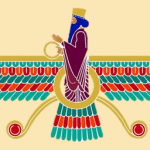India officially launched first website on Gautam Buddha : www.landofbuddha.in

“International Buddhist Conclave (IBC), 2018” was inaugurated by The President of India Shri Ram Nath Kovind in New Delhi on 23rd August, 2018. The Minister of State (Independent charge), Shri K.J. Alphons presided over the inaugural function. The Conclave is being organized by the Ministry of Tourism in collaboration with the State Governments of Maharashtra, Bihar and Uttar Pradesh from 23rd – 26th August, 2018 at New Delhi and Ajanta (Maharashtra), followed by site visits to Rajgir, Nalanda and Bodhgaya (Bihar) and Sarnath (Uttar Pradesh). During the inaugural session of the Conclave, the Ministry will launch its website www.landofbuddha.in and a new film showcasing the Buddhist sites in the country. From 24th – 26th August, 2018, delegates would be taken for site visits to Aurangabad, Rajgir, Nalanda, Bodhgaya and Sarnath.


The website Land of Buddha has focused on the places, events and every update from Indian Buddhism. According to the first page of the website….
Text : www.landofbuddha.in
In ancient India, the term “buddha” referred to an enlightened being, and while there has long been a debate about the exact year when Siddhartha Gautama, now known as Lord Buddha, the founder of Buddhism, was born, legends about his journey to enlightenment affirm that India was his true home. Born into a royal family in Kapilvastu, today believed to comprise the villages of Piprahwa, Ganvaria and Salagarh in Uttar Pradesh, Siddhartha Gautama’s early life was one of luxury and plenitude. A trip into the world the common man inhabited outside the royal palace, however, changed his life. When he beheld the struggles and vagaries of life in the visages of his people, he renounced his family and all royal comforts, deciding to lead the life of an ascetic. Pragbodhi in Bihar is believed to be the site where he meditated with severe penance for six years. Shrines and statues have been erected here in his honour. In the same state, Bodhgaya is widely considered to be the most sacred haven for Buddhist pilgrims from around the world: it is here that Buddha attained enlightenment under the Bodhi tree. Right next to this tree is the UNESCO World Heritage Site of Mahabodhi Temple. Sarnath, near Varanasi in Uttar Pradesh (UP), is where Lord Buddha preached his first sermon, the Maha Dharma Chakra Pravartan, after attaining enlightenment. Today, the Chaukhandi Stupa stands tall at the site, where he also met his first five disciples. Several sites in UP and Bihar including Kaushambi, Champanagar, the Indasala Cave and Prabhosa hold importance as places where he gave discourses and meditated. Shravasti in UP is important because Buddha is said to have made regular visits to it for 24 years and performed some of his most iconic miracles, confounding non-believers. Kushinagar, finally, is where he is said to have attained mahaparinirvana. His last rites were performed here, and he is said to have descended to Earth from Tusita heaven at Sankassya in UP.
Echoing through the centuries, Lord Buddha’s teachings were carried on by kings who were devoted to his message and determined to carry it forth into the world. Mauryan emperor Ashoka and Magadh’s king Bimbisara, both ardent followers of Buddha, propagated his principles across India as well as beyond its borders. Under emperor Ashoka’s patronage, monks calleddhamma dutas were sent from India to different parts of the subcontinent, and then as far as Greece, Syria and Egypt to spread the tenets of Buddhism. Several monuments and architectural marvels across India along with scores of monasteries continue to bear testimony to Buddhism’s roots in India, and its living heritage continues to resound the world over, even today.












